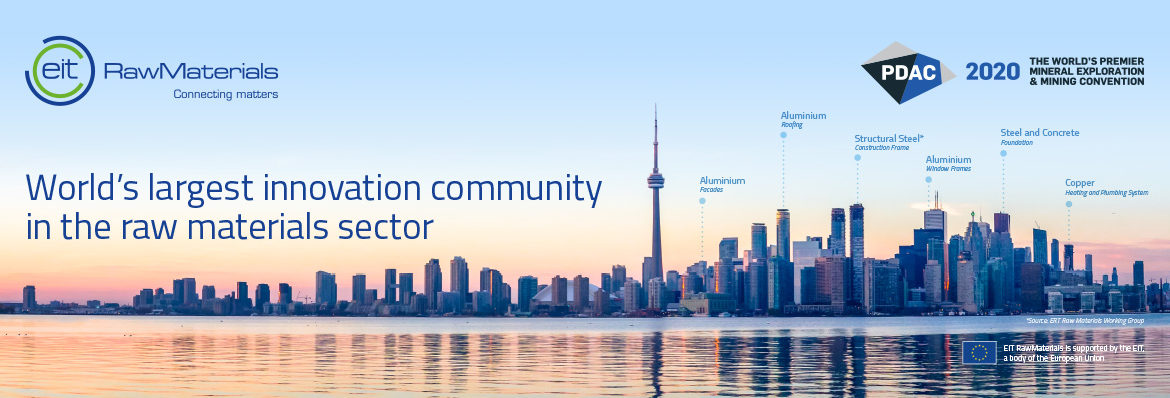
Showcasing Innovation and Entrepreneurship in the raw materials sector in Europe
This year, EIT RawMaterials in collaboration with the European Commission will be joining PDAC 2020 that will take place in Toronto, Canada. On 1-4 March, PDAC 2020 will gather companies active in mineral exploration and development sharing the vision of a globally responsible and sustainable minerals industry.
The Executive Agency for Small and Medium-sized Enterprises is organizing a technology workshop at the PDAC convention in Toronto, in collaboration with DG for Internal Market, Industry, Entrepreneurship and SMEs and EIT RawMaterials.
The PDAC convention offers a global reach out where the EU can attract investment and potential suppliers to cover the needs of the EU industrial value chains, and to promote values of sustainable and responsible mining and EU innovation, equipment, and services for the extractive sector. The 2019 convention welcomed participants from all over the world, including prospectors, students, indigenous peoples, government officials, investors, and executives, as well as Prime Minister Justin Trudeau. 1,100 exhibitors, 2,500 investors and 25,800 attendees from 132 countries participate in the event.
Apply for a travel grant and free access to PDAC 2020 with EIT RawMaterials
Are you a start-up planning to boost your future business in North America? Are you interested in prospect new leads, customers and partners at the PDAC 2020? Apply for the EIT RawMaterials travel grant up to EUR 1000 + the access pass fee (worth CAD 830) + access to matchmaking event organized by EIT RawMaterials. Only limited seats are available!
Deadline: 31 January 2020
A short course with innovation project MAP
Qualitative and quantitative prospectivity mapping and assessment of undiscovered mineral resources
On 4 March, innovation project MAP, supported by EIT RawMaterials, invites all the PDAC 2020 participants to join a short course on ‘Qualitative and quantitative prospectivity mapping and assessment of undiscovered mineral resources’.
The short course will provide an overview of several commonly used methods for qualitative mineral prospectivity mapping and the three-part methodology for quantitative assessment of undiscovered mineral resources. The development and integration of these methods will be reviewed, as well as practical implementation and recently developed software tools. Case studies in the USA, Finland, Greenland, and Germany will be presented.
